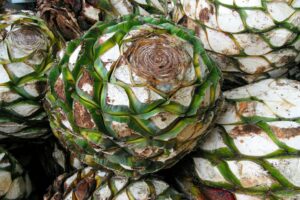Sweet Indulgences in a Glass
Dessert wine is a category of wine celebrated for its rich sweetness and is specifically designed to be enjoyed with or as dessert. With its luxurious flavors and high sugar content, dessert wine offers a delightful finish to any meal. This comprehensive guide will delve into what dessert wine is, the various production methods, popular types, and tips for serving and pairing.
What is Dessert Wine?
Dessert wine is known for its pronounced sweetness, achieved through several winemaking techniques that concentrate the natural sugars in the grapes. These wines range from lightly sweet to intensely syrupy, making them perfect for pairing with desserts or enjoying on their own.
How is Dessert Wine Made?
Here are the primary methods used to produce dessert wines, each contributing unique sweetness and flavor profiles:
- Late Harvest Wines:
- Process: Grapes are left on the vine longer than usual to develop higher sugar levels.
- Result: Produces dessert wines with rich sweetness and concentrated flavors.
- Noble Rot (Botrytis Cinerea):
- Process: Grapes affected by the Botrytis fungus dehydrate, concentrating their sugars and flavors.
- Regions: Common in Sauternes (France) and Tokaji (Hungary).
- Result: Yields complex, honeyed wines with deep, rich flavors.
- Ice Wine (Eiswein):
- Process: Grapes are harvested and pressed while frozen, which intensifies their sugar content.
- Regions: Prominent in Canada and Germany.
- Result: Known for its pure, concentrated sweetness and intense fruit flavors.
- Fortified Wines:
- Process: Adding grape spirits halts fermentation, preserving the wine’s natural sweetness.
- Regions: Notable in Port (Portugal) and certain Sherry and Madeira varieties.
- Result: Creates high-alcohol, sweet wines with flavors ranging from fruity to nutty.
- Appassimento (Drying Grapes):
- Process: Grapes are dried after harvest to concentrate their sugars before fermentation.
- Regions: Used in Italian wines like Vin Santo and Recioto.
- Result: Produces dessert wines with rich, raisin-like flavors.
Popular Types of Dessert Wine
- Sauternes: A French dessert wine made from Semillon, Sauvignon Blanc, and Muscadelle grapes, affected by noble rot. Known for its luxurious, honeyed sweetness.
- Port: A fortified wine from Portugal with varieties like Ruby and Tawny, each offering distinct sweet and rich flavors.
- Tokaji: A Hungarian dessert wine made from grapes affected by noble rot, prized for its balanced sweetness and acidity.
- Ice Wine: Produced from frozen grapes, this wine is celebrated for its intense sweetness and concentrated fruit flavors. Notable producers are in Canada and Germany.
- Moscato d’Asti: An Italian sparkling dessert wine that is light, fruity, and slightly sweet, with a low alcohol content.
- Sherry: A fortified wine from Spain with sweet varieties such as Pedro Ximénez and Cream Sherry, offering rich, caramelized notes.
- Vin Santo: An Italian dessert wine made from dried grapes, often enjoyed with biscotti.
Serving and Pairing Dessert Wine
- Pairing: Dessert wines pair well with a range of desserts, including fruit tarts, chocolate cakes, and cheese. The sweetness of the wine should complement the dessert.
- Serving Temperature: Most dessert wines are best served chilled, between 50-57°F (10-14°C). Fortified dessert wines like Port and Sherry are ideally served slightly warmer, around 60-65°F (15-18°C).
- Glassware: Use smaller wine glasses to concentrate the aromas and enhance the tasting experience.
Conclusion
Dessert wine is a sophisticated and sweet addition to any meal, offering a wide range of styles and flavors to explore. From the honeyed notes of Sauternes to the intense sweetness of Ice Wine and the complex, fortified characteristics of Port, there is a dessert wine to match every palate. Whether you’re pairing it with a decadent dessert or savoring it on its own, dessert wine is a luxurious treat that adds a touch of elegance to any occasion.
FIND TOP DESSERT WINE ON AMAZON BELOW:
Affiliate Disclosure: This article may contain affiliate links, and we may earn a commission if you make a purchase through these links. We only recommend products or services we believe will add value to our readers.






